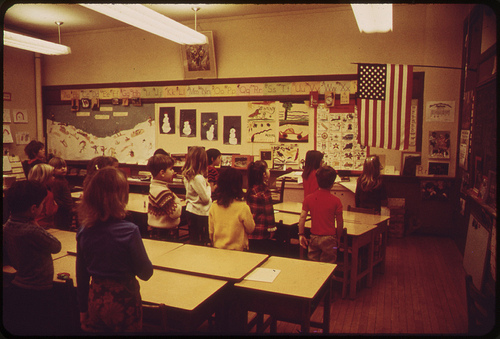 During the colonial period, when the main elected office in certain of the American colonies was the colonial governor, voters had to cover long distances to reach their polling locations. They often stayed overnight.
During the colonial period, when the main elected office in certain of the American colonies was the colonial governor, voters had to cover long distances to reach their polling locations. They often stayed overnight.
Election Day became a happily celebrated secular holiday in Puritan New England, where celebrations of religious holidays were often quite thin. Public festivals, called “Election Day Drinkings” were held by major families and the governor’s own household. To feed tired and hungry crowds of dutiful citizens, townswomen began baking thick, fruit studded election cakes, large species of English fruitcakes.
The first documented election cake was served in Hartford, Connecticut, at the colony’s expense (roughly £3). The first known recipe appears in Amelia Simmons’ American Cookery in 1796, the first cookbook for an American market–British cookbooks dominated up to this point (Simmons notably substitutes ingredients like maize for English oats). That recipe called for thirty quarts flour, 10 pound butter, 14 pound sugar, 12 pound raisins 3 dozen eggs and a quart of yeast.

By the 1830s, the politicians of Hartford reportedly offered Election Cake only to men who voted a straight party ticket.
In a letter found by old foodie, Janet Clarkson, young solider, Frederick Osborne, stationed in North Carolina in 1862 writes wistfully home to his family in Massachusetts:
“Aunt Jane has been making ‘lection cake I suppose, or is the time for it past?”
By the end of the century, it largely was.
Recipe for Election Cake, from the Boston Cooking-School Cook Book, 1911, orig. 1896)
1/2 cup butter
8 finely chopped figs
1 cup bread dough
1 1/4 cups flour
1 egg
1/2 teaspoon soda
1 cup brown sugar
1/2 cup sour milk
2/3 cup raisins seeded, cut into pieces
1 teaspoon cinnamon
1/4 teaspoon clove
1/4 teaspoon mace
1/4 teaspoon nutmeg
1 teaspoon salt
Work butter into dough, using the hand. Add egg well beaten, sugar, milk, fruit dredged with two tablespoons flour, and flour mixed and sifted with remaining ingredients. Put into a well-buttered bread pan, cover, and let rise one and one-fourth hours. Bake one hour in a slow oven. Cover with Boiled Milk Frosting.
You can locate your modern polling location here. The Culinary Institute of America offers one modern take on the Election Day recipe here.





 Happy Mother’s Day. Today is Boston’s annual
Happy Mother’s Day. Today is Boston’s annual  Photo via the
Photo via the 



 During the colonial period, when the main elected office in certain of the American colonies was the colonial governor, voters had to cover long distances to reach their polling locations. They often stayed overnight.
During the colonial period, when the main elected office in certain of the American colonies was the colonial governor, voters had to cover long distances to reach their polling locations. They often stayed overnight.
